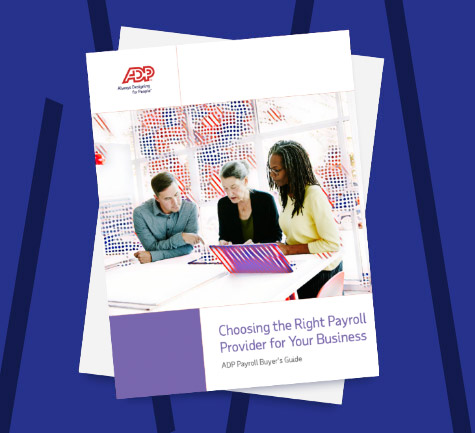A payroll ledger is a recordkeeping tool employers use to document the total expense of payroll processing. It tracks any transaction that originates in the payroll department, including payments made to employees, independent contractors and other business entities.
What are payroll ledgers used for?
The primary function of a payroll ledger is to organize and determine the total cost of payroll during a specific period. It may include the following details:
- Frequency of payment
- Employee pay totals
- Tax withholdings
- Benefits contributions and other deductions
- Business-to-business expenses (e.g. payroll service charges, insurance premiums)
Accountants use these records to prepare for new and ongoing costs and balance budgets. Payroll ledgers also provide a source of back-up tax documentation, if needed.
How to use a payroll ledger
The process of using a payroll ledger largely depends on whether the employer is running payroll manually, which can be painstaking, or benefitting from the time-saving features common with payroll software. Here are some of the more basic steps:
- Determine the specific data sets
Most ledgers track employees by name, followed by title or position, full- or part-time status, pay rate, hours worked, gross pay, deductions and net pay. Accounts payable and accounts receivable sections are also common for business-to-business transactions.
- Perform calculations
Add quantities vertically and horizontally to determine a business’s total payroll expenses, from individual worker to total outgoing costs.
- Adhere to a schedule
Maintaining a routine schedule for entering data in the ledger helps prevent mistakes and incomplete payroll records. Depending on their size and pay schedule, businesses typically update their ledgers weekly or monthly.
- Transfer records to the general ledger
Once payroll data is compiled and recorded, it can be added to the general ledger, joining the other business expenses managed by accounting departments. This step may not apply to some small businesses that treat the payroll ledger and the general ledger as one in the same.
Automating payroll ledgers
Payroll software comes with ready-made ledgers to track payroll expenses, eliminating the need for manual data entry and calculations. It also seamlessly connects with accounting programs so that employers don’t have to develop custom interfaces, which can be costly. With such integrations, data is automatically transferred from the payroll ledger to the general ledger each payroll period.
Benefits of using a payroll ledger
Employers who keep their payroll information concisely organized in a ledger may be able to:
- Improve accuracy
Payroll legers can be used to cross-reference information in payroll registers and identify discrepancies and errors before they result in tax penalties.
- Reduce costs
Ledgers help employers keep track of expenses – payments to employees, tax agencies, insurance providers, etc. – and stay within budget.
- Save time
Instead of searching through invoices or email correspondence, employers can use their payroll ledger to quickly see the balances of accounts paid and received.
- Safeguard data
Ledgers serve as an excellent form of backup documentation in the event of natural disasters, cyber-attacks, ransomware and other threats to data.
Frequently asked questions about payroll ledgers
How do you make a payroll ledger?
Many employers rely on payroll software, which have built-in payroll ledgers and automated recordkeeping. Those who prefer manual approaches, like Excel or dedicated ledger books, tend to follow these steps:
- Determine the information to be tracked – employee names, pay rates, hours worked, etc.
- Divide the ledger accordingly with columns for each data set
- Create an accounts payable and receivable section for business-to-business transactions
- Add columns as needed for new data sets
What is the purpose of a payroll journal?
A payroll journal or ledger’s primary purpose is to record all payroll-related transactions so that employers can continually assess the financial impact of payroll on their business.
What is meant by payroll journal?
Payroll journals are records of all accounting transactions that result from running payroll. For years, the entries were tracked on paper, but today, employers commonly use spreadsheets or dedicated payroll software.
This guide is intended to be used as a starting point in analyzing an employer’s payroll obligations and is not a comprehensive resource of requirements. It offers practical information concerning the subject matter and is provided with the understanding that ADP is not rendering legal or tax advice or other professional services.




